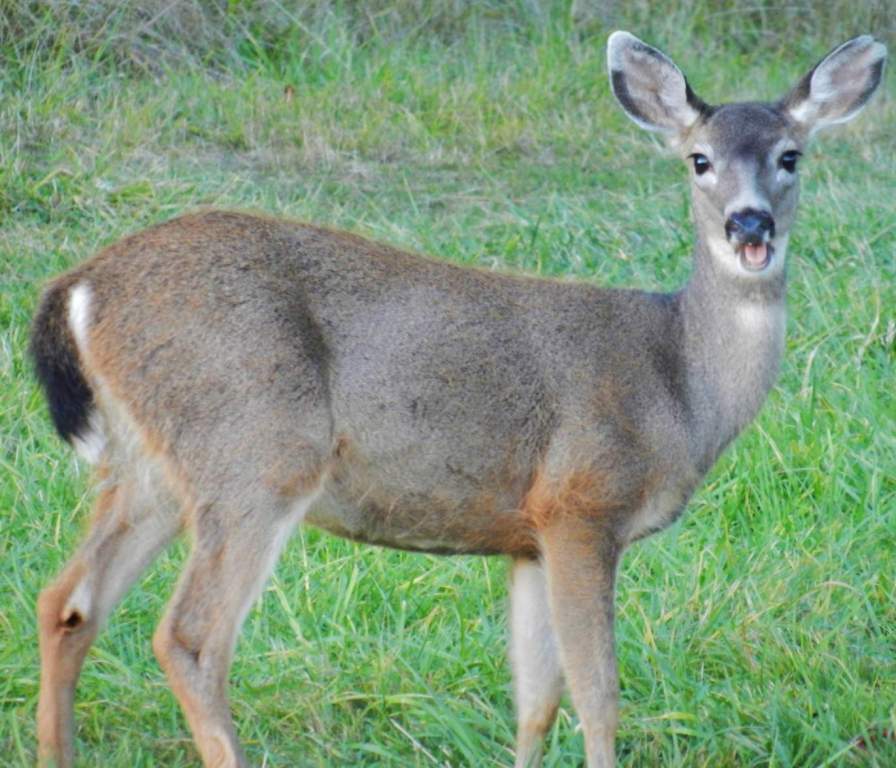The Pallas’s Cat is a little feline with a squat body, short legs, and a shaggy coat. It looks like a pug or Pekingese dog with its broad head and low forehead. In the Mongolian steppe, where the cat hunts in high-altitude grasslands and rocky outcrops, the thick fur and stocky shape prevent heat loss. Tibetan and Mongolian winters are severe; temperatures can reach -58°F (-50°C), which is colder than the temperature of a household freezer.
On the bleak, treeless Mongolian steppe, there is little cover to hide behind. In spite of their slow running speed, Pallas’s cats have become experts at hiding. The tips of their small, circular ears are level with the outer corner of the cat’s eyes due to their placement on the sides of the head. In this way, they are able to maintain a low profile. Their pale, shaggy fur helps them blend into short grass and rocks when threatened, allowing them to look almost invisible as they crouch and lie flat on the ground.

Pallas’s cat is found in the semi-desert areas of central Asia and the high-altitude steppe grasslands. It has been found at elevations of 9,850 to 13,120 feet (3,000 to 4,000 meters) in the Tien Shan, Govi-Altai, and Pamirs, though most records come from lower elevations. The Ladakh cat lives in barren valleys and hilly terrain above the tree line, between 11,800 and 15,750 feet (3,600 and 4,800 meters).
Pallas’s cats commonly live in habitats with low rainfall, low humidity, and a variety of temperatures. In central Asia, the summer air temperature may reach 100°F (38°C); in the winter, it may drop to -58°F (-50°C), and snowfall is light and uneven. Deep, loose snow is a challenge for Pallas’s cats, and they are rarely seen in areas with more than 4 inches (10 cm) of snow.
Hunting these cats involves stalking or creeping up on their prey. They are not good runners, so they need to get close to the prey before pouncing. Most hunting is performed at sight, using sparse vegetation for cover. Cats with low-set ears and flat foreheads are suited for scavenging in open terrain, as their low-set ears and flat foreheads enable them to peek over rocks or low shrubs without exposing too much of their heads.
There are a variety of small rodents, insects, birds, and carrion that Pallas’s cats eat. It is the pika that makes up more than half of the diet of cats in areas where pikas are common. Because they are larger than gerbils and jerboas, Pallas’s cats prefer catching these 4.5-ounce rodents.
The Pallas’s Cat is a seasonal breeder, as might be expected from a cat living in such a harsh climate: most litters are born in April and May. There are two to four kittens in a Pallas’s litter, and as many as five or six are not unusual. Other cat species have two or three kittens in a litter, but Pallas’s cats have large litters; two to four kittens are common, and as many as five or six are not uncommon. A litter of eight kittens has even been recorded. In highly seasonal environments with fluctuating prey abundance, it is not uncommon for felids to have such large litters. It is also common for Canadian lynx and European wildcats to have eight kittens in a litter when there is an abundance of food.
They shelter in abandoned marmot burrows, caves, and rock crevices instead of digging their own dens. A fox, eagle, wolf, and herder’s dog can all attack these cats if they are caught in the open. In captivity, the cat’s reputation for meanness may be due to the constant fending off of larger predators. In zoos, Pallas’s cats are notorious for their fierce behavior. A Cincinnati Zoo employee remembers a litter of Pallas’s kittens that were believed to be having breathing problems by zookeepers.
After they heard the kittens growling and hissing at each other before they even opened their eyes, they realized that the noise they heard was the kittens growling at one another. There are extremely low populations of Pallas’ cats, and they are highly vulnerable to overexploitation. Herders use the fat to treat frostbite, among other things, and they are legally hunted for fur and traditional medicines. Overgrazing by livestock and state-sponsored pika-control programs also threaten their existence.
Status: IUCN Red List—Near Threatened
Weight: 5–10 pounds (2.5–4.5 kg)
Head-body length: 18–26 inches (46–65 cm)
Tail length: 8–12 inches (20–31 cm)
Litter size: 1–6 kittens, 3–4 common
A Pallas’s cat resembles a pug or a Pekingese dog due to its squat, short legs. A Pallas cat lives in rocky outcrops in semidesert areas of central Asia. It is usually in caves, rock crevices, and marmot burrows that they spend the day, emerging in the late afternoon to begin hunting. In order to hunt, Pallas’s cats rely heavily on camouflage and poor running skills.
Cats have low-set ears that are adapted for hunting in open spaces. Pikas are plant-eating mammals related to rabbits. As many as 10 pups can be born every year in pikas in the high-altitude grasslands of Asia, which makes them a keystone species.
Read More: Ocelot Cats – Perfectly Patterned to Blend Sunlight and Shadows







